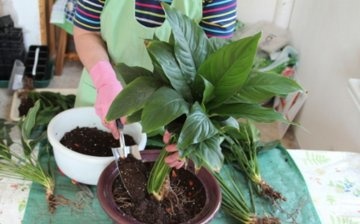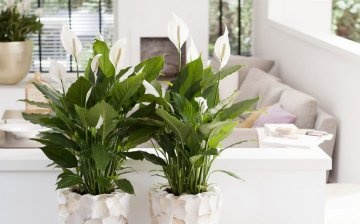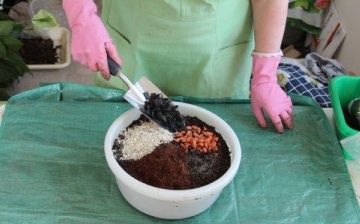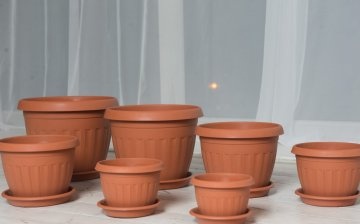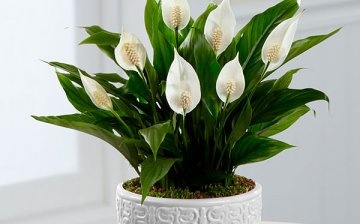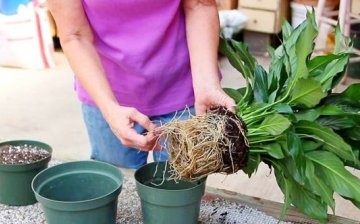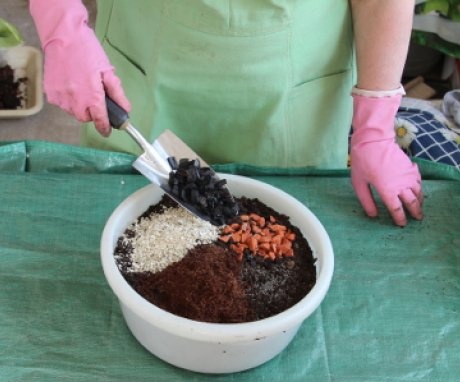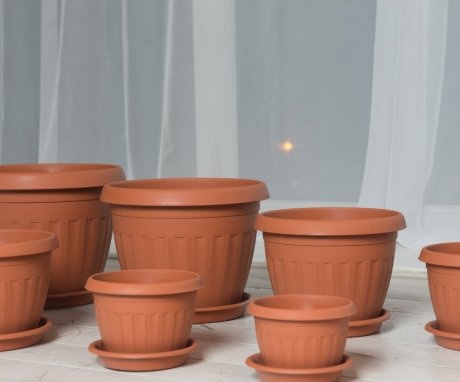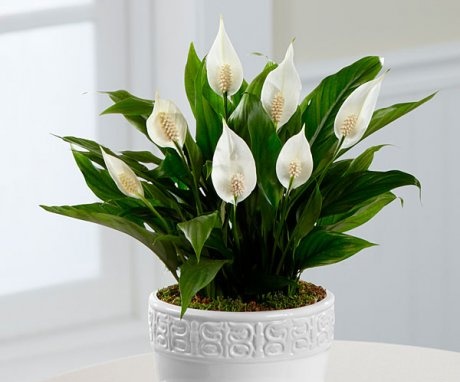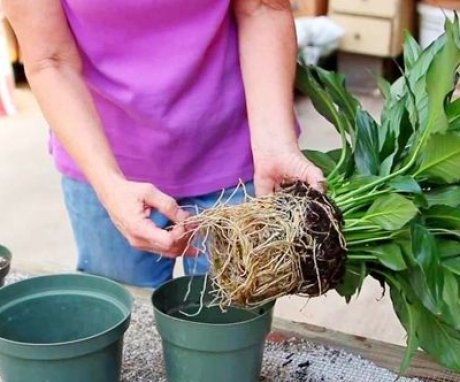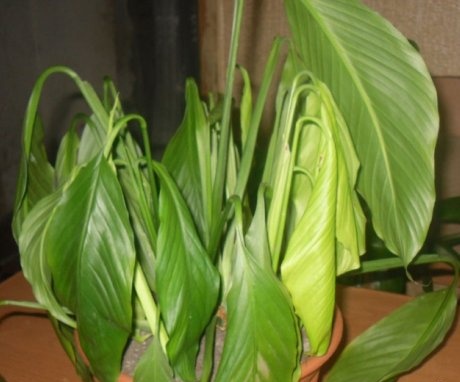Soil for spathiphyllum: soil composition for planting and transplanting
The Aroid family to which it belongs spathiphyllum, has many representatives in the wild and indoors, greenhouses. Florists choose plants of this species for the decorativeness of the leaves, the unusual flowering. And caring for Aroids is simple. The main thing is to choose the correct composition of the soil.
Exotic spathiphyllum in the tropical and subtropical forests of South America and Asia has a wide variety of forms. It is the originality of a flower that looks like an ear of corn surrounded by a snow-white sail that is appreciated by the plant. In addition to decorativeness, spathiphyllum is indispensable for saturating premises with ozone, combating toxic substances, mold in the house. But the flower feels good if comfortable conditions are created for it and attentive care is organized.
Content:
- Description of the decorative flower
- Soil for spathiphyllum and its composition
- How to choose the right plant pot?
- Everything you need to know about planting spathiphyllum
- Transplant terms and rules
- Possible problems of growing a flower
Description of the decorative flower
It is not for nothing that Spathiphyllum is called female happiness. In addition to the signs associated with the plant, and its appearance is distinguished by its virgin purity. When an ear appears on a long peduncle, surrounded by a white diaper, the thought of a mother protecting her child from adversity comes.
Spathiphyllum belongs to perennial herbaceous crops. It lacks a central stem, and rounded leaves with an elongated tip extend immediately from the root. The surface of the green leaf plate is smooth with a pronounced central vein.
In nature, there are more than forty plant species, some of them belong to indoor crops.
Both tall flowers with leaf plates wide up to half a meter in diameter and miniature are popular. Indoor species are valued for long and abundant flowering. And a plant will bloom if the appropriate soil is selected for it.
Soil for spathiphyllum and its composition
For spathiphyllum, the composition of the soil is especially important, otherwise the plant begins to wither. And the patient, it will become prey for pathogenic fungi and viruses. A soil substrate for a perennial should have a number of qualities. These include:
- looseness
- ease
- breathability
- nutrient saturation
- weak acidity
Soil mixture for aroids is most often purchased in a specialized store. But the substrate may not be loose enough. Materials such as sand or vermiculite will help eliminate the deficiency. The amount of loosening agents should not exceed ten percent of the mixture.
If the substrate is prepared at home, then deciduous or sod soil is taken as a basis. Peat and humus are added in equal amounts. To enhance the nutritional value, it does not hurt to introduce a little superphosphate. From baking powder, sand, crushed charcoal or brick chips are suitable. Thoroughly chopped tree bark can also replace them. The drainage layer makes up only one tenth of the soil substrate.
All components of the soil for spathiphyllum provide the plant with quality nutrition.
And sand with charcoal gives the roots of the flower an unhindered supply of air and moisture. AND soil acidity will stay at 5 or 5.5. A properly selected soil composition for a plant will enable it not to get sick, bloom profusely, and feel good.
How to choose the right plant pot?
The roots of spathiphyllum do not differ in strong growth, therefore, the capacity of the plant is selected depending on age. A pot with a diameter of nine to ten centimeters is enough for a young flower. This volume is quite enough for root growth.
An adult plant will need a different container. Therefore, when transplanting, take a pot with a maximum width of twenty centimeters at a shallow depth. After all, the roots of spathiphyllum increase on the sides, and not in length. As they grow, they braid a clod of soil in a container.
When planting plants, pay attention to the fact that the roots are in contact with the walls of the container, otherwise a spacious pot will lead to a lack of flowers.
It is not so important what material the pot for spathiphyllum is made of, but its size plays a big role in the growth of the root system, the flowering of an ornamental perennial.
Everything you need to know about planting spathiphyllum
Spathiphyllum is usually propagated in parts. In order to correctly plant a plant, you need to know its basic rules:
- In a pot with a diameter of eight to ten centimeters, a two-centimeter layer of expanded clay or pebbles, crushed brick is poured onto the bottom.
- Then comes the turn of the soil. They should not immediately fill the entire container. Two-thirds is enough.
- A plant is placed in the middle of the container, spreading the roots.
- Sprinkle soil on top, slightly tamping it. The tubercles of the flower's air horses should not be buried in the ground.
- After the procedure, the stability of the stems is checked. Water spathiphyllum abundantly. If the soil has settled heavily, then add some more substrate.
After planting, for the first time, a polyethylene cap is put on the bush to increase the humidity, to delay evaporation. It will help to avoid wilting of leaves and spraying them with settled water at room temperature. When the planting is successful, then the spathiphyllum will soon bloom.
Transplant terms and rules
Best time to transplant spathiphyllum - late winter - early spring. For young plants, the procedure is mandatory annually. For three-year-old specimens, the transplant is carried out as needed, but at least once every three to four years. When the roots of the flower fill the entire pot, then transplanting is imperative.
Features of plant transplant:
- The container is poured with boiling water before the procedure. A drainage layer is laid on the bottom of it. Then comes the filling with the nutrient mixture.
- The pot with the plant is placed on an oilcloth and the bush is carefully pulled out. To pull it out faster, it is better to moisten the soil abundantly in the container.
- The root is freed from expanded clay crumbs and soil.
- Peduncles, dry stems, bases of old leaves are cut with scissors or a sharp knife. If the bush is a very overgrown curtain, then parts can be separated from it along with a healthy and strong rhizome for reproduction.
It remains to plant the prepared plant bush in a new pot, sprinkle with soil and water abundantly. Transplanting spathiphyllum means rejuvenating it, giving room for its further growth and flowering.
Possible problems of growing a flower
Although spathiphyllum is unpretentious, it can experience difficulties caused by improper care, poor and heavy soil:
- When the leaves of a perennial turn yellow, this is a signal of a lack of moisture in the soil and in the air. Spraying and watering will save the flower from death. You can increase the humidity in the room by placing an aquarium or a jar of water next to the plant. For a constant flow of moisture, moistened sphagnum moss or pebbles soaked in water are placed in the pan.
- Sometimes yellowness appears only on the elongated tips of the leaves. Hard water causes this problem. It is necessary to take boiled or settled water for irrigation.
- An excess of nutrients in the soil is also contraindicated in spathiphyllum. Brown spots on the leaves will tell you about this. It is better to fertilize regularly, but not in large quantities, focusing on fertilizers containing potassium and phosphorus.
- Decorativeness of aroids in their colors. If the spathiphyllum does not bloom, then it is necessary to transplant it, picking up the pot in size. Small daylight hours and poor soils do not favor the appearance of flowers. And the plant itself looks weak with pale, elongated stems and leaves. The pot must be placed in a well-lit place without bright direct sunlight. And complex fertilizers are applied to the soil.
- Abundant flowering will be when the buds are pruned. Cut off the faded stems closer to the root.
- But diseases and pests can also destroy the plant. With spider mites, scabbard, aphids are struggling insecticidal preparations, infusions of tobacco dust and laundry soap. Processing is carried out up to three times with a break of ten days. Taking a shower will help wash the pests off the leaves.
- From excess moisture, the flower can get sick, the root of it can rot. The leaves of the plant will turn black and the plant will die. Will save from fungal infections transplantation and processing fungicides... During the transfer of the flower to another container, the roots must be cleaned of rot, cut off the damaged parts.
All problems of spathiphyllum arise from an incorrectly selected soil composition, soil condition, and pot size.
More information can be found in the video:



